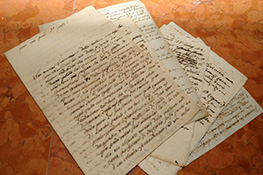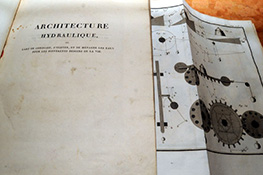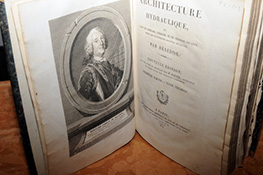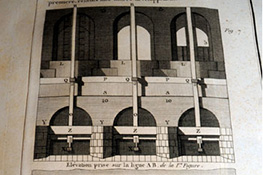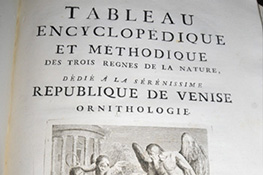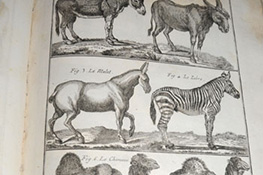Versione italiana English version Version française Versión en español
The papers preserved in the archive testify to the wide range of scientific and cultural interests of Carlo Ignazio. We find a conspicuous series of notes, letters, brochures, dedicated to the theme of the railways, the Canavesana, the Genoa-Turin, the Novara-Turin of which redesigns the lines. Giulio was also interested in the project for the Frejus tunnel, completed by his pupil Germano Sommeiller with Severino Grattoni and Sebastiano Grandis. Giulio considered fundamental the development of infrastructures as they fly for the economy of his country.
He is also remembered for his contribution to the economic and social progress of Piedmont and for his efforts to intensify technical vocational education. In the LXX folder there is a manuscript entitled Questioni e note informi sull'industria piemontese that contains very interesting ideas and proposals.
Of course we find among the materials preserved many notes related to his lessons in physics, concerning the subjects of hydraulics, hydrostatics, hydrodynamics, mechanics. Carlo Ignazio, a pupil of Giorgio Bidone (a scholar of hydraulic jumping), was in fact professor of rational mechanics at the University of Turin, of which he became rector in 1844. In his teaching of mechanics he was inspired by the most recent achievements in England by the school of Robert Willis. We remember how school and formation constituted for Giulio, a supporter of utopian socialism, a further topic of passionate interest: since 1840 he held, under the pseudonym of Luca Ligorio, the section Lezioni di tecnologia popolare sulle Letture popolari by Lorenzo Valerio and actively engaged in teaching at the Turin Technical Institute, founded in 1845, with evening lessons in geometry, mechanics and applied chemistry for workers. This institute was the original nucleus of the Application School for Engineers provided for by the Casati Act in 1859.
Among the papers of the Fund there are many curiosities, including a series of notes of a medical, technical, scientific, agricultural, also related to everyday life, from the construction of fireplaces to recipes including that of tartar sauce, the size of the clothes and hats, the eight cards containing the extensive description of a comet appeared on San Giorgio Canavese in 1822.
Very rich of course the family correspondence, including the letters of Carlo Filippo Giulio (cousin of Carlo Ignazio), Napoleonic soldier, Bourbon and Sardinian, and those of the wife of Carlo Ignazio, Carlotta Pollone, of which there is also a curious watercolor portrait, in which she's represented with a tricolor tie.
- Archive inventory (pdf 6.6 MB)

